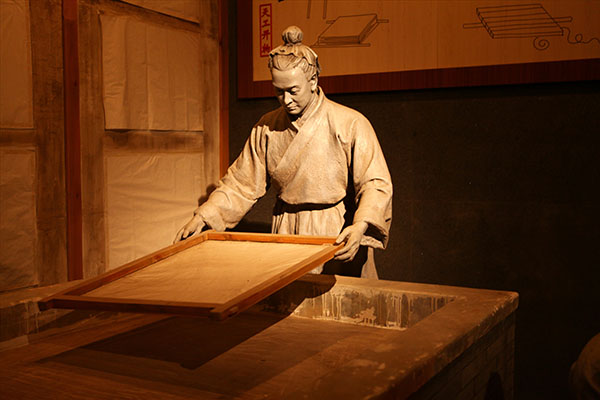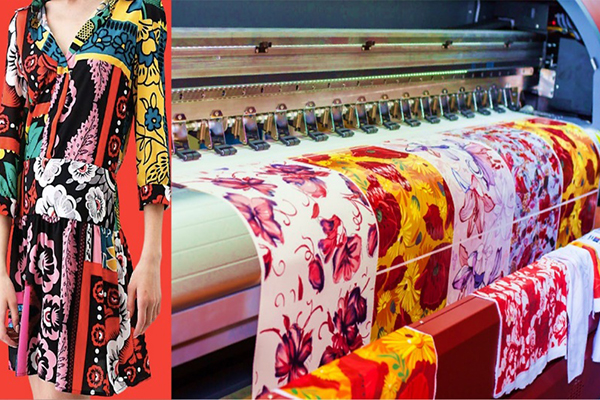Printing press invention is one of the most significant milestones in human history. It revolutionized the way information was disseminated and opened up new horizons for the spread of knowledge. Although the printing press is often associated with Johannes Gutenberg, who invented the first mechanical printing press in Europe, printing technology had been used for centuries in other parts of the world. In this article, we will compare the Chinese printing press and Gutenberg’s printing press, two printing methods that emerged independently in different parts of the world.
Historical Context of Chinese Printing Press
Printing technology has been used in China for over a thousand years. The oldest surviving printed material in China dates back to the Tang Dynasty (618-907), and the technology continued to evolve over the centuries. The earliest printing method in China was woodblock printing, which involved carving characters or images on a wooden block and then pressing the block onto paper or cloth. Woodblock printing had some advantages over hand copying, such as producing multiple copies quickly and accurately. However, it was limited by the need for a new block for each page, making it impractical for large-scale printing.
The movable type printing method was invented in China by Bi Sheng, a commoner from the Song Dynasty (960-1279), who developed a technique for making clay movable type characters. The characters could be arranged on a tray to form a page, inked, and then printed on paper. Bi Sheng’s method was more efficient than woodblock printing because it allowed the reuse of characters, and it was faster and more accurate than hand copying. However, Bi Sheng’s method did not become widely adopted in China, possibly due to the difficulty of mass-producing the clay characters.
Gutenberg’s Printing Press
Johannes Gutenberg is credited with inventing the first mechanical printing press in Europe in the mid-15th century. Gutenberg’s printing press consisted of several components, including movable metal type, ink, and a press. The type was arranged on a composing stick and then transferred to a printing press, where it was inked and pressed onto paper. The use of movable type made it possible to print multiple copies of a page quickly and accurately, making the printing process much more efficient than hand copying or woodblock printing.
Gutenberg’s printing press was a significant improvement over existing printing methods in Europe, which were mainly woodblock printing or manual copying. Gutenberg’s press allowed for faster and more accurate printing, leading to the production of books and other printed materials on a scale that was previously unthinkable.
Comparison of Chinese Printing Press and Gutenberg’s Printing Press
While both the Chinese printing press and Gutenberg’s printing press share some similarities in the basic concept of printing technology, they differ in the practical application of the printing methods. One of the most significant differences between the two methods is the use of movable type. While the Chinese movable type method was developed earlier than Gutenberg’s, it did not gain widespread acceptance due to the difficulty of mass-producing the clay characters. Gutenberg’s movable type method, on the other hand, used metal type, which was more durable and easier to produce in large quantities.
Printing surface: The Chinese printing press mainly used paper and cloth, while Gutenberg’s printing press used paper and vellum. The use of vellum allowed for the production of more durable and high-quality books, which were highly valued by European scholars. The Chinese printing press was primarily used for printing religious texts and other materials, while Gutenberg’s printing press was used for a wide variety of materials, including books, pamphlets, and newspapers.
Impact they had on society:While the Chinese printing press played a crucial role in disseminating knowledge and religion in China, it did not have the same impact on social, economic, and cultural developments in China as Gutenberg’s printing press had in Europe. Gutenberg’s printing press revolutionized book production and distribution, making books more affordable and accessible to a wider range of people. This led to a significant increase in literacy rates and the spread of new ideas and knowledge. Gutenberg’s printing press also played a vital role in the European Renaissance, a period of cultural and intellectual rebirth that saw significant advances in literature, science, and the arts.
Legacy of Chinese Printing Press and Gutenberg’s Printing Press
The impact of the Chinese printing press on world history is significant, particularly in the dissemination of knowledge and the spread of religion. While it did not have the same impact on social, economic, and cultural developments as Gutenberg’s printing press, it was a crucial step in the development of printing technology. The movable type printing method that Bi Sheng developed in China paved the way for more efficient printing methods, including Gutenberg’s press.
Gutenberg’s printing press, on the other hand, had a profound impact on the world, particularly in Europe. It facilitated the spread of knowledge and ideas, leading to significant advances in science, literature, and the arts. Gutenberg’s press also played a crucial role in the development of the Protestant Reformation, which challenged the authority of the Catholic Church and led to significant changes in religious practices and beliefs.
Conclusion
Chinese printing press and Gutenberg’s printing press represent two significant developments in the history of printing technology. While both share some similarities in the basic concept of printing, they differ in the practical application of the printing methods and the impact they had on society. The Chinese printing press was crucial in the dissemination of knowledge and religion in China, while Gutenberg’s printing press revolutionized book production and distribution, leading to significant advances in science, literature, and the arts in Europe. Both printing methods played a vital role in the development of printing technology and the spread of knowledge, paving the way for the modern printing industry we know today.



